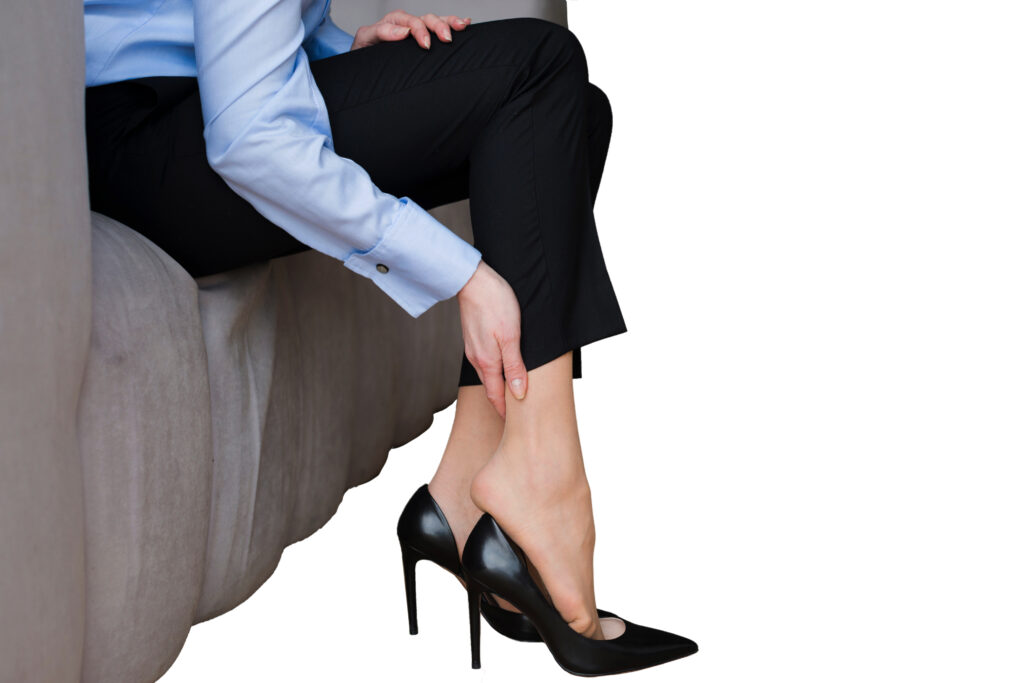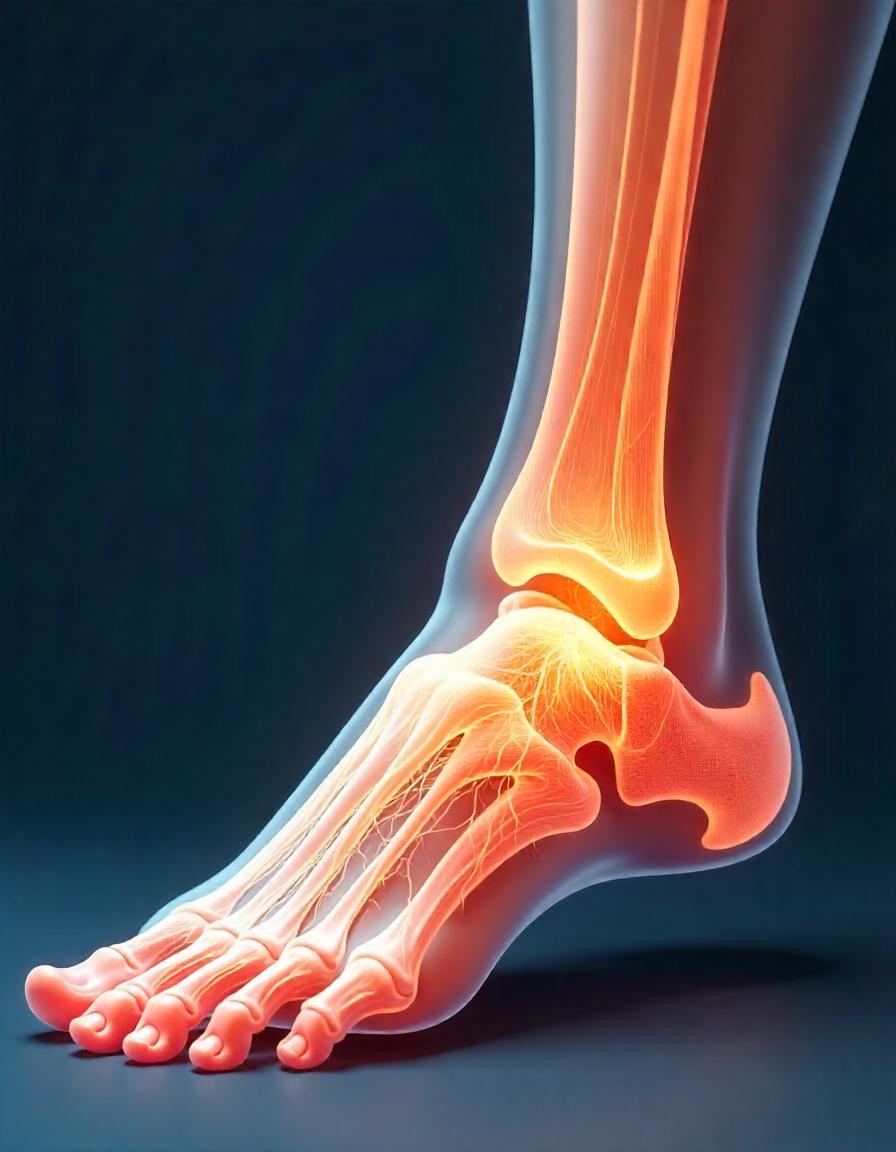
Heel Pain Treatment in Suburban Foot & Ankle Center
Understanding the Causes of Heel Pain
Heel pain is a result of various causes, each one of them has a different effect on the feet. If you understand your foot pain, you can begin the recovery process easily.
Common Causes of Heel Pain :
- Plantar Fasciitis : The most frequent cause of heel pain is plantar fasciitis which comes about when the band, which is thick and firm, known as the plantar fascia, which is the bottom part of the foot, becomes inflamed. The pain is often felt like a big needle stuck in the bottom of the foot, especially when you take the first few steps in the morning.
- Achilles Tendinitis : This condition restrains the Achilles tendon, which is the tendon that connects your calf muscles to your heel bone. Excessive use of the tendon from activities such as running or jumping can lead to an inflammation, which affects the region making it painful and stiff at the back of the heel.
- Heel Spurs : Heel spurs are bony outgrowths that form underneath the heel bone, and they are usually accompanied by plantar fasciitis. Though they do not always hurt you, they may begin a ruckus when you have been sitting or standing for a long time.
- Haglund’s Deformity : Also known as “pump bump,” this is a boney buildup that appears behind the heel and usually comes from rubbing against the shoes, especially the uncomfortable high heels, that continue with the pressure and lead to swelling, pain, and irritation.
- Sever’s Disease : (in Children) A frequent source of heel pain in kids particularly sportsmen, Sever’s Disease comes to pass when the growth plate in the heel gets inflamed due to overuse.

Proven Heel Pain Treatments That Work
At the Suburban Foot & Ankle Center, there are various kinds of heel pain treatments available that are designed to help you walk without foot pain again and do the things you usually do every day.
Non-Surgical Treatments :
- Custom Orthotics : These are specifically made insoles that can correct biomechanical imbalances which in turn reduce the pressure placed on the heel and this will allow the symptoms not to occur.
- Physical Therapy & Stretching Exercises : Exercises focusing on particular parts will increase pliability, increase strength to muscles and free pressure on your heel. Our podiatrists will help you go through the exercise program that is very specific to your condition.
- Shock Wave Therapy: A non-invasive procedure using sound waves is carried out by our doctors to stimulate healing, reduce pain, and improve mobility in the affected heel.
- Corticosteroid Injections : When your heel pain is intolerable, our physicians shall advise you to have steroid injections in order to reduce inflammation of healing and provide you with short-term comfort.
Surgical Treatments (If Needed) :
The vast majority of heel pain cases can be treated non-invasively, however, surgery may be needed if conservative therapies turn out to be ineffective. Minimally-invasive approaches are accessible at our clinic for plantar fasciitis and Achilles tendonitis, leading to the fastest recovery along with a minimal period of inactivity.
Contact Us to Learn More About Our Treatment Options
How to Prevent Heel Pain from Coming Back
Eliminating heel pain completely is the primary step toward utilizing your feet for the longest time possible. A few simple changes to wardrobe and foot care can make a difference in maintaining overall foot health.
Foot Care Tips to Prevent Heel Pain :
- Choose Supportive Shoes : Always go for well-crafted and cushioned shoes with proper arch support to prevent unnecessary pressure on your heels.
- Avoid High Heels : Do not wear high-heeled shoes which are the cause of the pressure on the heels of your feet.
- Regular Stretching : Keep using the hand-on-foot stretch exercise that will help to maintain the flexibility and avoid muscle stiffness.
- Maintain a Healthy Weight : The added weight increases the load on your feet and consequently causes you to have a higher probability to be afflicted with heel pain. Request a Personalized Preventive Care Plan
When to See a Podiatrist for Heel Pain
In case you are dealing with severe or persistent heel pain, it is very important to get medical help. If treatment is delayed, there can be long-term issues that are much more difficult to be cured.
Signs You Should See a Podiatrist :
- Persistent foot pain that doesn’t improve after rest or using over-the-counter pain relievers
- Difficulty in walking or doing daily activities due to heel pain
- Severe swelling, redness, or stiffness in the heel
- Sharp or stabbing heel pain, particularly while you are getting out of bed in the morning
Frequently Asked Questions
About Heel Pain Treatment We’ve gathered questions and answers that are asked frequently about heel pain to ensure you have all the details you need.
How long does it take to recover from heel pain?
The recovery time is based on your situation. Some patients may notice improvement within just a few weeks after the beginning of treatment; on the other hand, more complicated situations might take several months to heal.
Do you accept insurance for heel pain treatments?
Yes. We accept a variety of insurance plans. Now contact us or visit our Insurance Page to get more information.
Can I treat heel pain at home?
Although mild heel pain is often relieved by home remedies such as rest, ice, over-the-counter pain relievers, chronic or severe pain can only be resolved by a professional doctor. Disregarding this problem may develop into a more serious condition and your life could be at risk.
How can I get started with the best foot surgeon near me?
Booking an appointment is easy! Use our online scheduling tool or visit one of our convenient walk-in locations for immediate care. Start your journey to pain relief today!
